Esperimenti scientifici per bambini – Il sacchetto magico. Per questo esperimento servono soltanto:
acqua di rubinetto
matite ben appuntite, quante ne volete
un sacchetto trasparente di quelli apri/chiudi per alimenti, ma se non lo avete potete ingegnarvi come ho fatto io
un secchio.
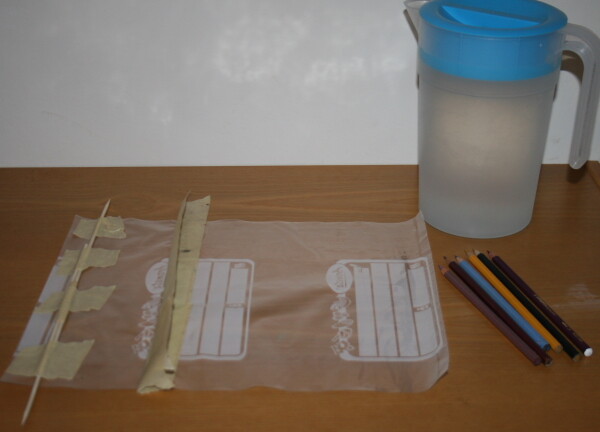
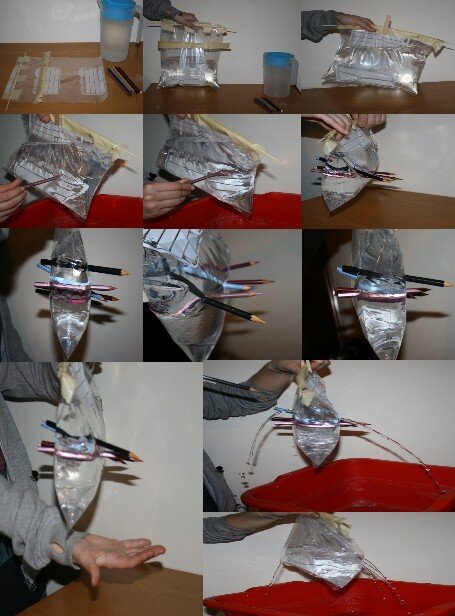
Esperimenti scientifici per bambini – Il sacchetto magico
Riempite il sacchetto di plastica con acqua, quindi chiudetelo e verificate che non ci siano perdite; in caso contrario il sacchetto sarà da cambiare. Per sicurezza fate l’esperimento tenendo il sacchetto su un secchio, oppure nel lavandino.
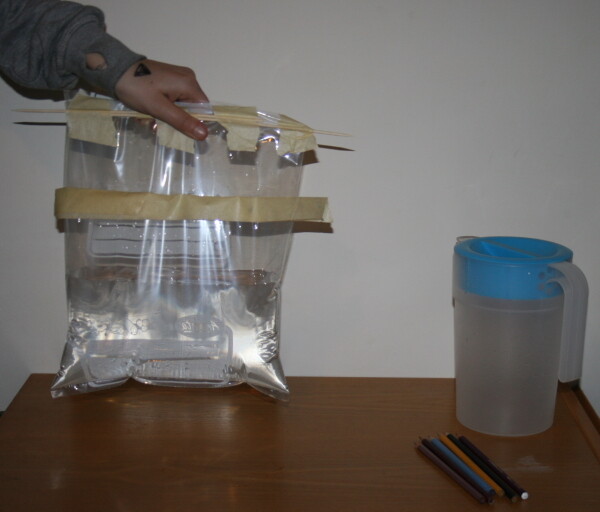
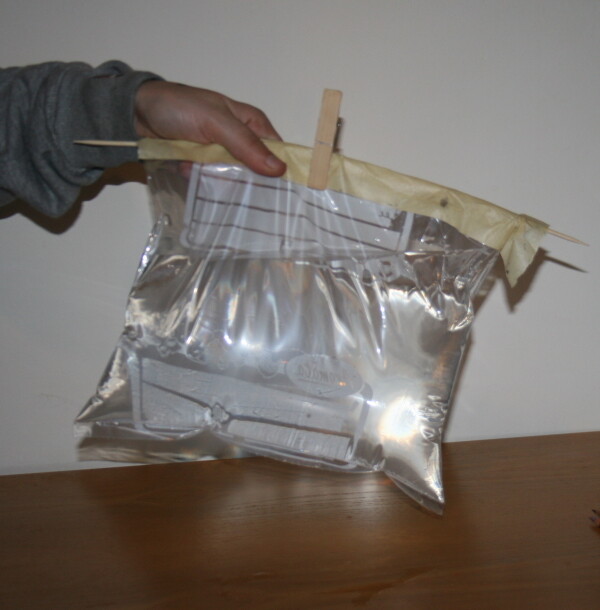
Inserite una ad una le matite nel sacchetto, con mano ferma ma senza violenza: magicamente non uscirà una sola goccia d’acqua! Il sacchetto sembra proprio sigillare le matite che sono state inserite: fatelo notare ai bambini.
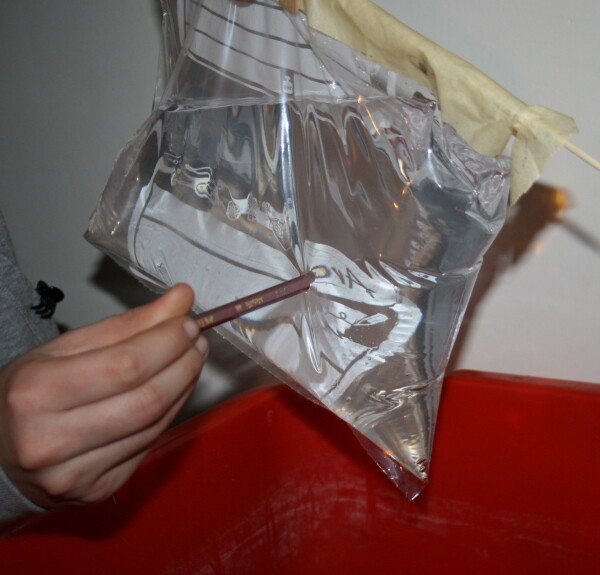
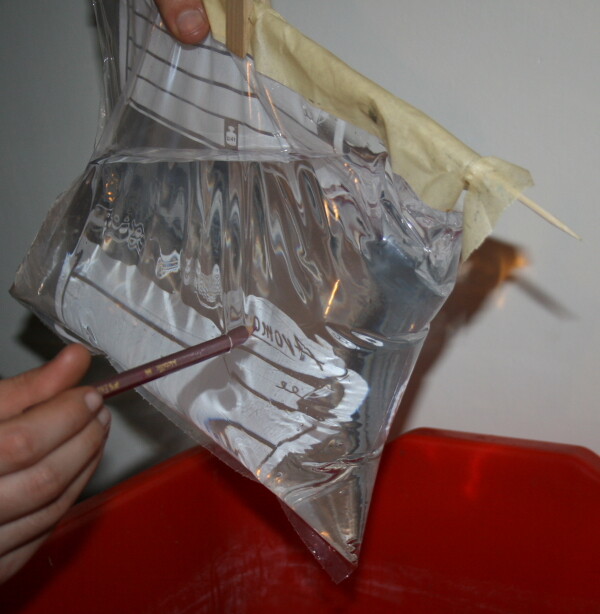
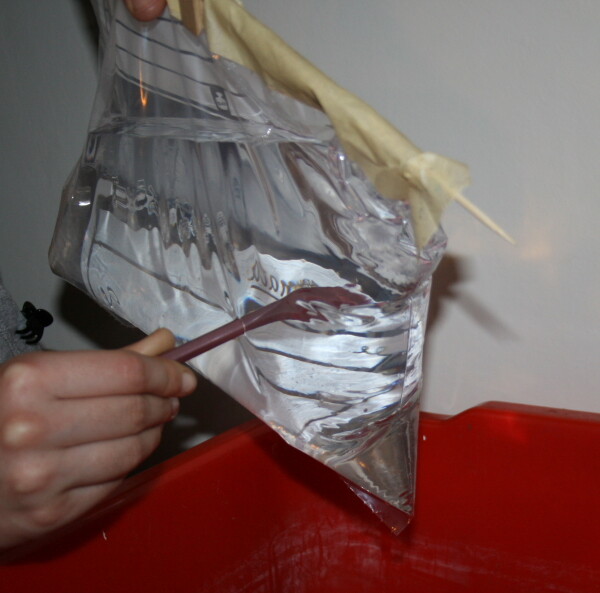
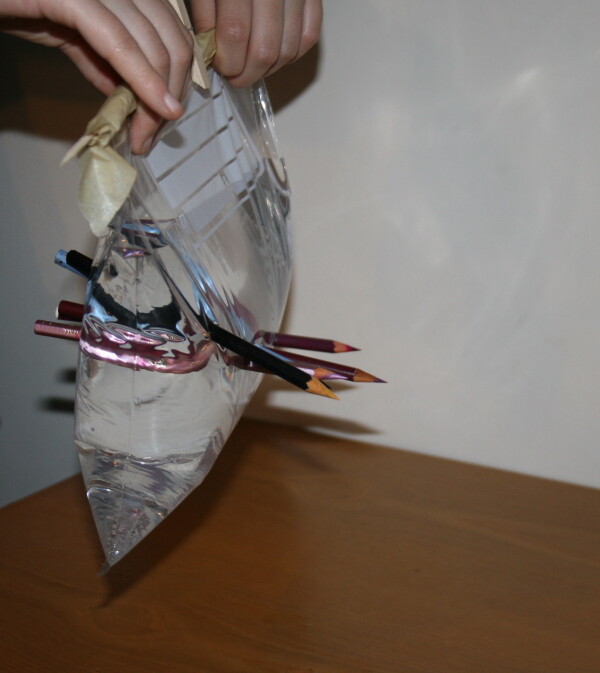
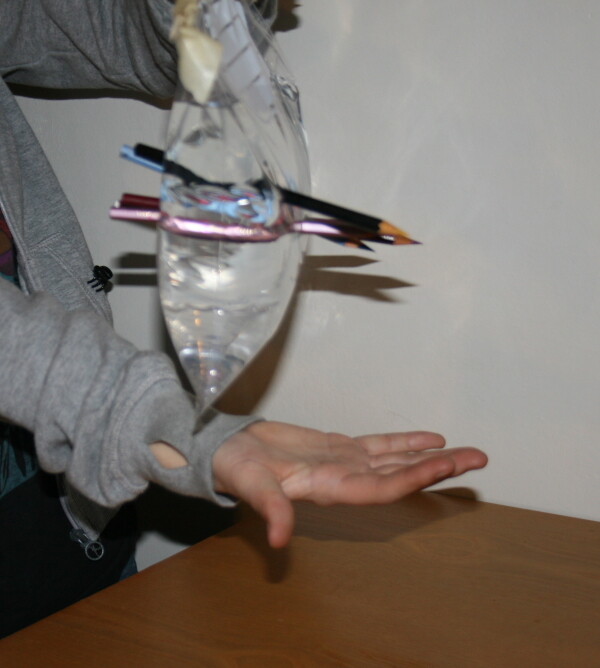
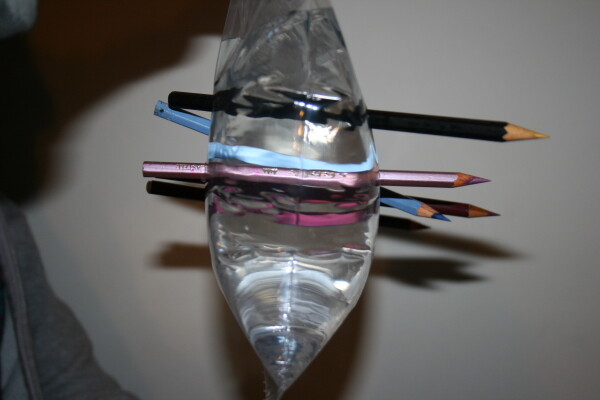
Esperimenti scientifici per bambini – Il sacchetto magico
Quando hai finito, poni il sacchetto sul secchio (o sul lavandino) e rimuovi una ad una le matite:
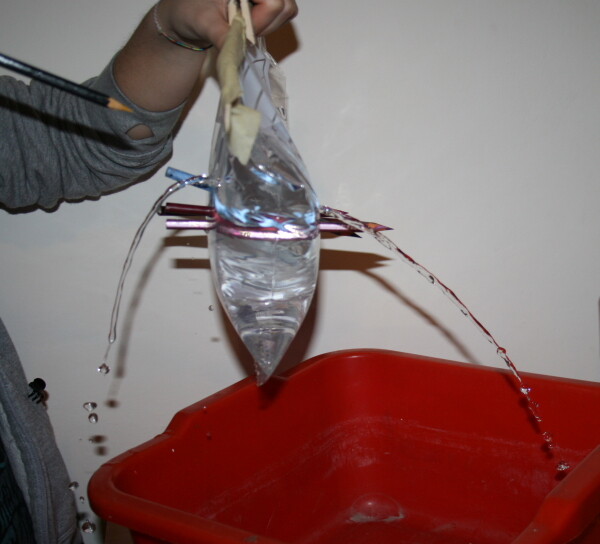
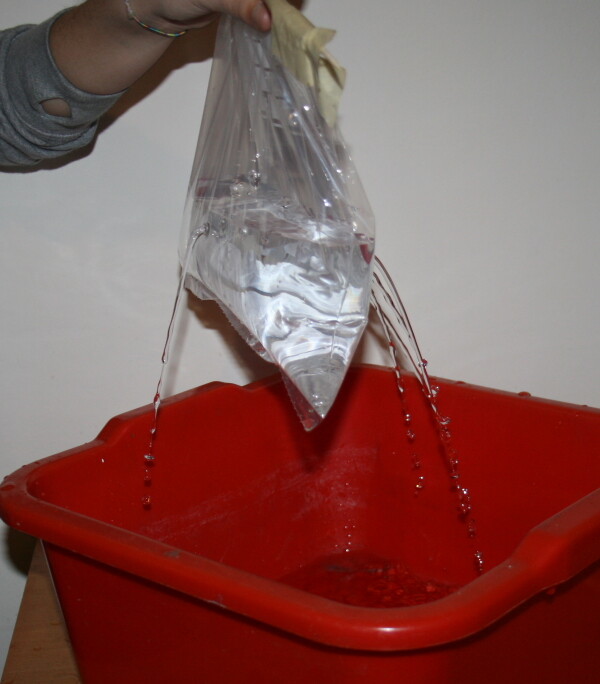
Perchè?
I sacchetti di plastica sono fatti di polimeri. Un polimero è una grande molecola costituita da diverse unità molecolari, identiche o simili, chiamate monomeri e tenute insieme da legami chimici (legami covalenti).
 wikipedia.org
wikipedia.org
Queste catene di molecole sono molto flessibili e danno al sacchetto elevata elasticità.
Quando la matita appuntita penetra nel sacchetto, le molecole di cui è costituito la abbracciano creando una guarnizione a tenuta stagna intorno alla matita, e il sacchetto non perde.
Altri esperimenti coi polimeri:
Esperimenti scientifici per bambini – Il sacchetto magico – Qui un video dell’esperimento:
Esperimenti scientifici per bambini – Il sacchetto magico. Nel web:
http://tinkerlab.com/2012/03/magical-plastic-bag-experiment/
http://www.stevespanglerscience.com/experiment/leak-proof-bag
http://www.abc.net.au/science/experimentals/experiments/episode25_1.htm

Science experiments for kids: magical plastic bag. For this experiment are used only: tap, well-sharpened pencils (many as you want), a transparent plastic bag of those open / close for food, but if not have it you can remedy with plain plastic bag, as I did, a bucket.


Science experiments for kids: magical plastic bag
How is it done?
Fill the plastic bag with water, then close it and check that there are no leaks; otherwise the bag will be to change. For safety you do the experiment holding the bag on a bucket, or in the sink.


Insert one by one the pencils in the bag, with a firm hand but without violence: magically will not leave a single drop of water! The bag looks just seal the pencils that were included: do note to children.






When you’re done, put the bag on the bucket (or sink) and remove one by one the pencils:


Science experiments for kids: magical plastic bag
Why?
The plastic bags are made of polymers. A polymer is a large molecule composed of different molecular units, identical or similar, called monomers and held together by chemical bonds (covalent bonds).

These chains of molecules are very flexible and give the bag a high elasticity.
When the sharpened pencil penetrates into the bag, the molecules of which it is composed embrace it, creating a watertight seal around the pencil, and the bag does not leak.
Other experiments with polymers:
Science experiments for children – Balloon skewer
Science experiments for kids: magical plastic bag
Video
Science experiments for kids: magical plastic bag
Other links
http://tinkerlab.com/2012/03/magical-plastic-bag-experiment/ http://www.stevespanglerscience.com/experiment/leak-proof-bag http://www.abc.net.au/science/experimentals/experiments/episode25_1.htm

